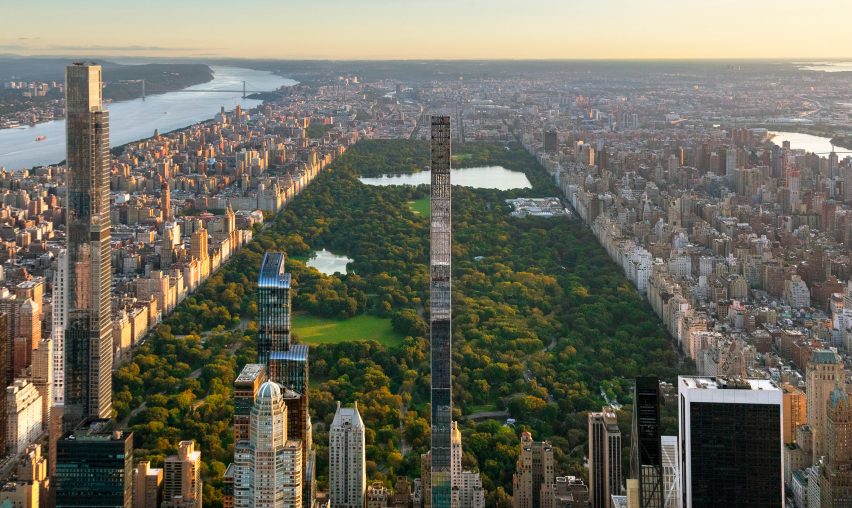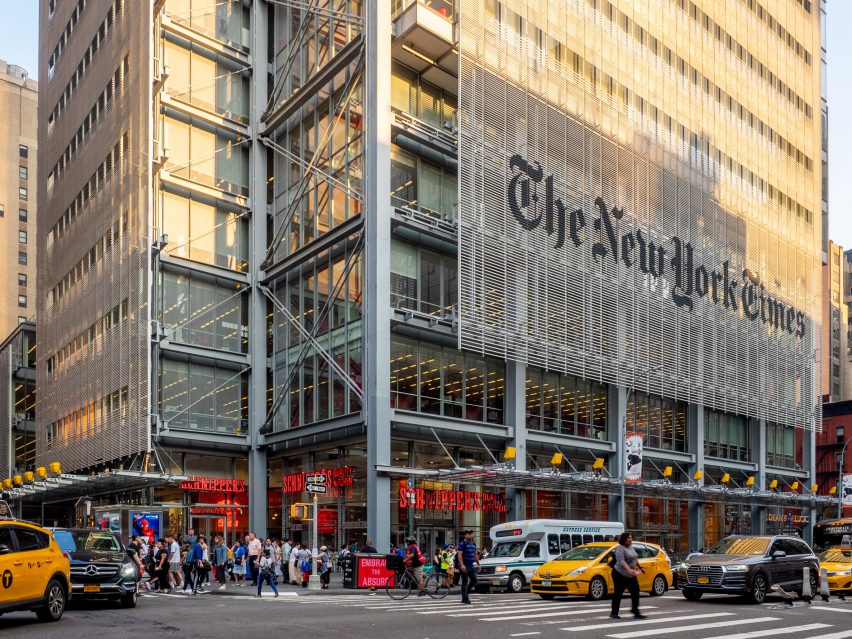
The transition from print to online journalism has led to “chaos” within architecture criticism that has upsides as well as downsides, author Paul Goldberger tells in this interview.
Pulitzer Prize-winner Goldberger served as the in-house architecture critic for The New York Times in the 1970s and ’80s during the zenith of postmodernism.
He spoke to Dezeen about the changing priorities within architecture discourse in recent decades, including a greater focus on social responsibility.
“There is a greater willingness to deal with issues and to deal with architecture as a symbol of social inequity,” he said.
As an example, he pointed to the conversation surrounding recently built skyscrapers on the Manhattan street colloquially known as Billionaire’s Row.

“If you look at the 57th Street supertall towers, while there are aesthetic differences from one to the other – and some are better than others and more successful as works of architecture – that whole discussion, while it’s not invalid, is incomplete,” Goldberger told Dezeen.
“It has to be set within the context of the fact that every one of them is a powerful symbol of profound social inequalities that are becoming more and more marked in this society,” he continued.
“Those buildings are more and more conspicuous as physical objects, and I think that overrides the aesthetic differences.”
Goldberger links this shift in values to the waning of so-called starchitecture culture – where individual architects become famous for their work – and the growing consideration of social and environmental issues in architecture.
He cited an addendum in a new edition of his influential 2009 book Why Architecture Matters that delves into social responsibility and architecture as an example of this shift.
Obsession with starchitects “exaggerated”
However, Goldberger believes that starchitecture and socially responsible architecture are not mutually exclusive – warning against considering these terms in “absolutes”.
“We are in a period where there’s a much greater understanding of social responsibility and the need of architecture and architects to do different things,” he said.
“I think our culture was far too much in thrall of celebrity and built up starchitects beyond reason, and now we are probably putting them down or trying to avoid them beyond reason.”
He suggests the idea that architects themselves have sought celebrity status has been overstated.
“I think the obsession with starchitects was always somewhat exaggerated – never as all-consuming as the media might have had it – and that was not completely architect-driven so much as driven by the culture’s broader focus on celebrity,” he said.
Goldberger traces the starchitect tradition back to hugely influential American architect Frank Lloyd Wright.
“The greatest bullshit artist in the history of architecture was Frank Lloyd Wright – he also happened to have been one of the greatest architects who has ever lived,” said Goldberger.
“[Wright] fabricated parts of his own history – he was very gifted at exploiting the media,” he continued.
“The vehicles people have at their disposal to play those games evolve and change. It’s not entirely new, it’s just that the tools change.”
“Nobody has the authority”
Architecture criticism has undergone a major shift during Goldberger’s career as journalism has increasingly moved online.
The resulting proliferation of voices, especially on social media, has led to a cacophony of architectural discourse much different to the mid-to-late 20th century, he said.
“I was at The New York Times in the day when it had a kind of hegemony over journalism and also over the world,” Goldberger recalled.
“We were critical to what happened in the city. The New York Times would have an opinion about almost anything, and everybody would pay attention.”
The transition away from individual critical voices having a major influence has had positive impacts and not-so-positive impacts, he argued.

“I don’t think anything directs the public discourse now,” he said. “There’s a lot of shouting and not a lot of clarity.”
“In some ways that’s healthy. It creates a sort of chaos and it levels the playing field – almost anybody can be on it. If certain established organs of journalism had too much authority once, now, kind of nobody has the authority.”
But while the more democratised critical landscape has enabled historically under-represented people to participate, Goldberger is uncertain about whether social-media-dominated debate is leading to useful conversations.
“Everybody’s happy to try to kick the ball in some direction or another, but we’re not really having serious discussions about serious issues in terms of planning and architecture and design,” he said.
“The most urgent issue is not what people build, but how much they’re building; there’s too much. The critical issue is land preservation and growth.”
Goldberger has written widely about the importance of criticism in the work of preservation, and believes there can be a balance between a chorus of voices and rigorous critique on these kinds of issues.
“Like the slow food movement, there’s absolutely a need for a slow reading movement,” he said.
“I know the audience is smaller, but I think [criticism] is real and serious – not every building is worth that, plenty of buildings are just fine to talk about on X, because they’re not worth more than 280 characters, but other things are.”
“I don’t want to sound like a Luddite,” he said. “Because, like all of us, I spend a lot of my life online – so I’m not sitting here yearning for the day when print was all there was.”
“But I don’t want us to be in a day where it doesn’t exist at all.”
The main photo is by Michael Lionstar.
Source: https://www.dezeen.com/2024/05/01/architecture-criticism-paul-goldberger-interview/